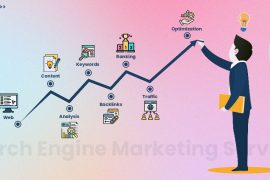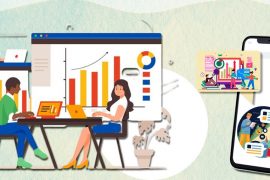Are you ready to take your data visualization skills to another level? Reporting never looks like a simple task to accomplish. Even, in maximum traders shrink just at this thought. Visualizing is far beyond analyzing and understanding; it’s another level of mastery that maximum people couldn’t manage. If you can perform it at such a level, then you are capable of unlocking priceless insights for your business. Often we can see more time is spent on pulling a report than offering original insights. Hence, in this scenario, you must consider Google data studio.
What is Google Data Studio?
Google Data Studio is a free data visualization tool that genuinely represented in beta mid-2016. This platform syncs users’ all valuable data sources into one single reporting experience. It allows users to develop visual and informative dashboards that are simple to explain, customize, and share. Since 2018, Google Data Studio has been out of this beta version, which indicates any user can easily get access over its immersive abilities.

Top Profits of Google Data Studio:
In the following, we are going to know some of the vital profits of the Google Data Studio platform-
- Connect to any kind of data source (Think Bing, Google, LinkedIn, Facebook, etc.)
- Free to use.
- Completely customizable- the capability to transform reports for every single client’s requirements
- On-brand and consistent
- Data integration real-time
- The time-saving technique applied each month for pulling reports- indicates that you will avail to concentrate on actionable insights.
- A warning with connecting all properties outside of them Google needs a third-party connector. It typically comes with monthly fees, for reference, you can use ‘Supermetrics’ to pull in other data platforms.
Are you ready to give a try for Google Data Studio?
If yes, then great! Let’s go straightway into its primary materials.
Getting Began with Google Data Studio:
There are only a few major areas to assure your first Google Data Studio report is a success. These are including-
- Selecting a template
- Data sources connection
- Selecting metrics that actually matter
- Reports sharing
Templates:
From the very beginning, what you have to do is to select a template. Google Data Studio offers a huge variety of templates to get things started. However, if you are new in this Data Studio, then you must know that it is vital enough to select a template depends upon the exact data type that is being portrayed.
With any kind of template, you will get the capacity to customize different items and different fonts to make a more consistent report. The amazing factor of this report is that here you can add several pages.
It doesn’t make you feel like your whole trading story requires to manifest on one single page! Many people like to start with the blank report, it serves them an open canvas to blueprint the data story that requires to be told. All clients have their own various requirements, and their reporting needs to be unique.
The most effective route that you can try is to develop templates specific to PPC, SEO, and other paid social. With those as a standard, we can then simply jerk them depends upon individual cleit requirements.
Adding Data Sources:
Connecting sources of data is a vital thing to become successful in report build. There are a wide number of connectors available for people in Google Data Studio. With the use of these connectors, you can take over its manual tasks and syncs all different data for you! You can also select to add data sources at the very beginning of your build report, or you can add them later on. These things could be found by selecting “Add Data” in the toolbar. However, the only drawbacks to these third-party connectors are-
- Extra cost
- Reports can be slow down
- Sometimes metrics are deplored, which means that it is major to remain on the top of all changes to users’ developed reports and rebuild metrics if required.
Selecting Metrics:
The Worst scenario in this matter while clients open reports and see an entire dump of data. However, when we call Google Data Studio is entirely customizable, we do not mean all metrics are available. Hence, by experimenting with the exact metrics and goals-based insights, it manifests to the client that you are listening to them.
Reports Sharing:
When you are prepared to make a move on sharing your reports with your clients, then your need to be sure to revisit the settings. The following things are available for sharing-
- Email invitation
- Here users have the opportunity to “view” or “edit” permissions.
- Anyone associated with the report link can easily view it.
In addition, Google has added another cool feature that indicates once the platform developed of beta was the alternatives to limit sharing in the following choices:
- Restrict editors from shifting access ad adding new people
- Downloading disable, printing, and copying for viewers.
Hence, at the end of this Google Data Studio process, you need to verify these boxes before sharing your reports.


 | 500+ Customer from BMBS to Fortune 500 companies
| 500+ Customer from BMBS to Fortune 500 companies






